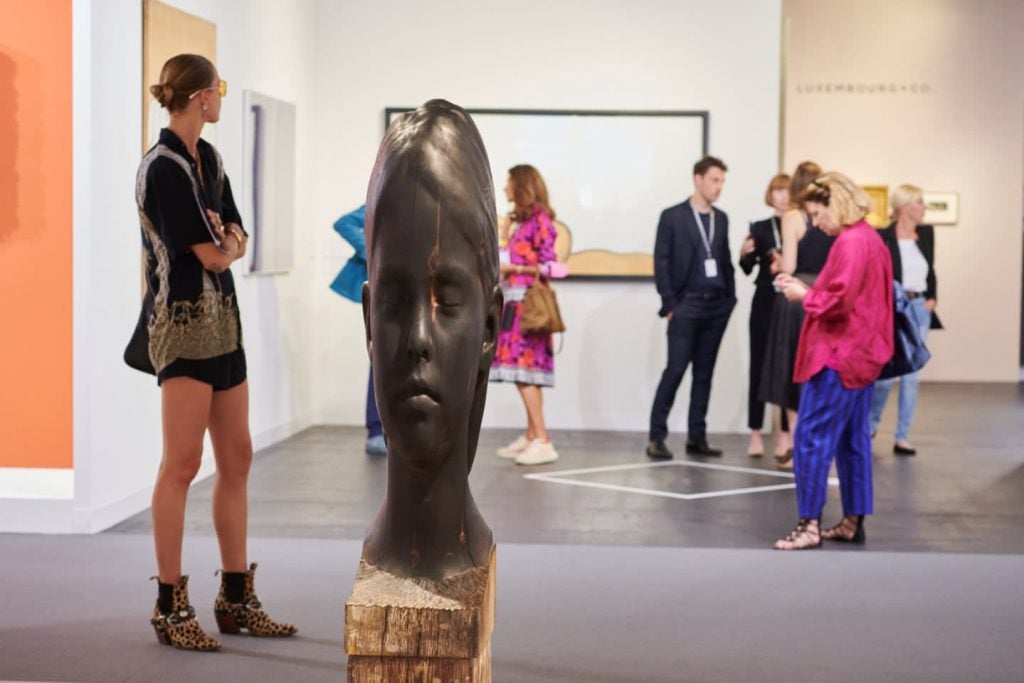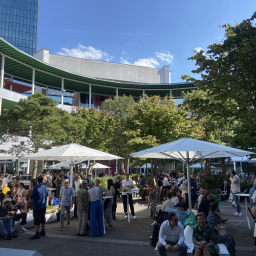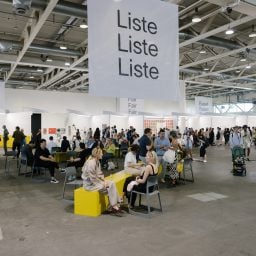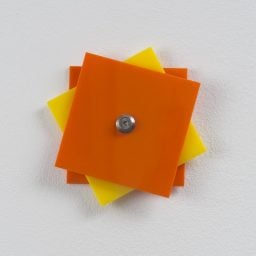The press materials are in our inboxes, collectors are clicking in to private previews, seating arrangements are nearly finalized. As participants and visitors get ready to descend on Art Basel, its satellite fairs, as well as its premier museums and galleries, one could say there is a new energy flowing around the Rheine.
Most obviously: a few years ago, business scion James Murdoch acquired a controlling stake in MCH Group, the parent company of Art Basel. Last year, Art Basel launched another fair in Paris and its long-term global director, Marc Spiegler, announced he would step down, passing the baton to Noah Horowitz in a newly created role of CEO. Since the end of 2022 there’s been a flurry of other appointments to the fair, including, most recently, Maike Cruse, longtime director of Gallery Weekend Berlin, who heads to Basel in July to become director of Basel’s flagship fair.
None of those shifts have caused much tumult to the ways things run at Art Basel—yet. But the vibes are shifting. That may be because there are macro-shifts in the art market at play, as art industry experts with keen eyes will tell you. I spoke to dealers, art advisors, and collectors to see what will be top of mind next week.
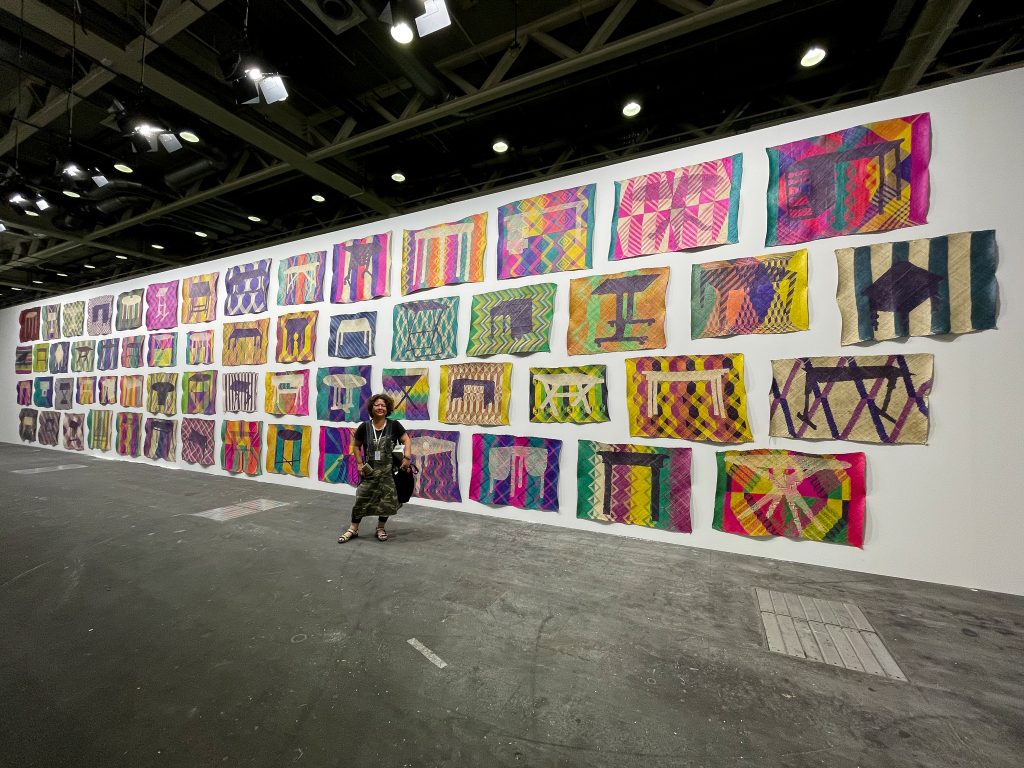
Kota Kinabalu-born-and-based artist Yee I-Lann and her work Tikar/Meja at Unlimited, Art Basel, 2022, Switzerland. Courtesy of Silverlens.
A Market Rebalanced?
Continual speculation about a possible looming recession has raised serious questions about the trajectory of the art market. U.S. art advisor Todd Levin says the talk and the fear of a retraction may be overblown, but noted that the apprehension is understandable if the frothy art market of the last decade is “the only normal you know.” Exceptionally low inflation and quantitative easing, resulting in low interest rates, together created a runaway art market in recent years. Levin now sees a rebalancing in the works. “There was rampant speculation, particularly when it comes to younger and newer art,” he said, citing the rush on emerging artists who would, in some instances, have 200-person wait lists. “Good or bad? I am not making a judgement. But this is a more normalized market from my context of 40 years of experience.”
What could that mean for the flagship fair next week? “I’ve seen quite a few packing lists at this point,” Levin said. “It is all the names you know and love, but there are very few eight figure works at the fair, relatively speaking.” He expects a few, but said that, in this economic mood, artworks over 25 million dollars will likely be selling in backrooms and private sales only. That can contribute to an environment of less risk-taking on the fair floor.
“Speculation has certainly cooled off, but this is not a bad thing,” added Levin. “I hope this is the return to the mean of a sensible market.” He expects “a spotty but active Basel” that will on the whole be a “qualitatively more sober affair.”
The uncertainty has occasionally been taxing for those in the middle and emerging markets.
Dealer Kendra Jayne Patrick will attend Art Basel Statements for this first time this year. She opened a space in Bern, an hour’s train ride from Basel, last fall. She has noticed that even discussion about the market retraction affects business. “This space of being potentially in a correction moment or non-correction market moment, mixed with high prices and the broader economy, has made for an unpredictable atmosphere this year,” she said. “Collectors are inundated with new and larger fairs and there is no respite.”
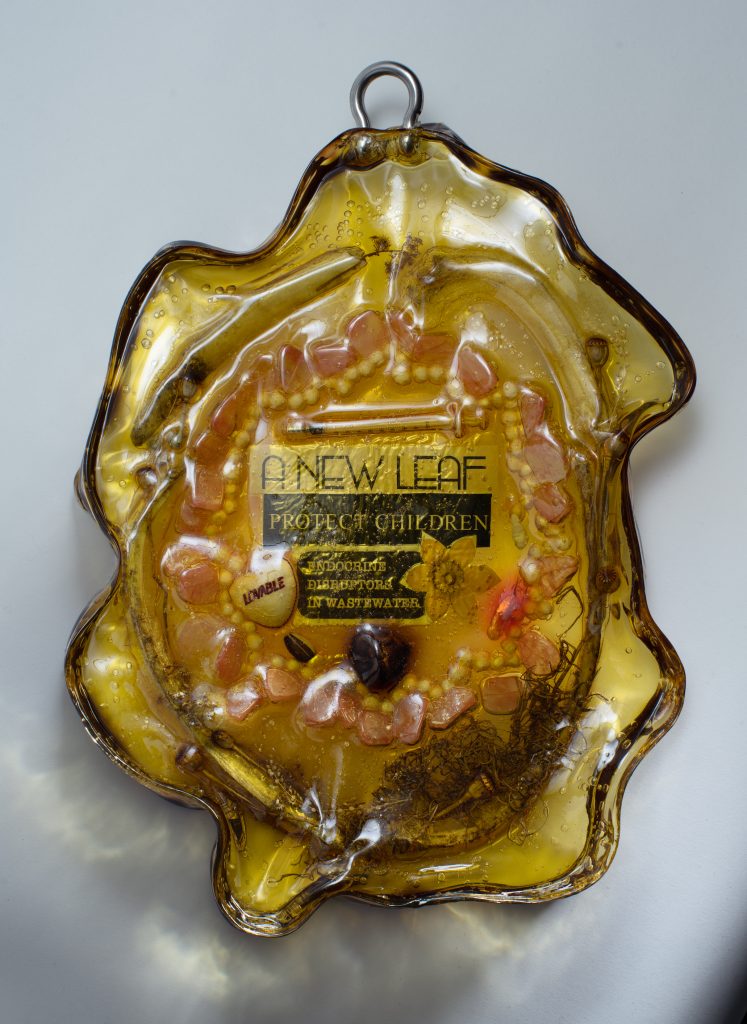
Sharona Franklin’s A New Leaf (2023). On view at Kendra Jayne Patrick at Art Basel Statements. Courtesy the and the artist and Kendra Jayne Patrick. Photo: Ernst Fischer
U.S. collector Larry Warsh feels like change is afoot at the fair. “Art Basel used to be a [business-to-business] affair, and it is more [business-to-consumer] now,” he said. “I have trouble with the price of new and untested artists, compared to certain historical positions at Art Basel… where I can attest to their pricing” noted Warsh.
He is not alone in that sentiment, and given the prevailing sentiment of uncertainty, there may be more leaning in when it comes to negotiations. “Even more so than an actual recession, that uncertainty is not helpful to the art market,” said art advisor Benjamin Godsill. For discounts, 15 percent may be the new 10 percent when it comes to middle of the market works next week, though it’s too soon to christen that a phenomenon.
The uncertainty has not been entirely negative, either. It’s created “a focus on quality over quantity,” Godsill said. “There is much less of the feeling that you should buy because you might miss out.” He will be after works that build their collections in meaningful ways. At the top of his list are the presentations of Cory Arcangel (Lisson Gallery) and Alex da Corte (Sadie Coles HQ and Matthew Marks Gallery) at Unlimited next week.
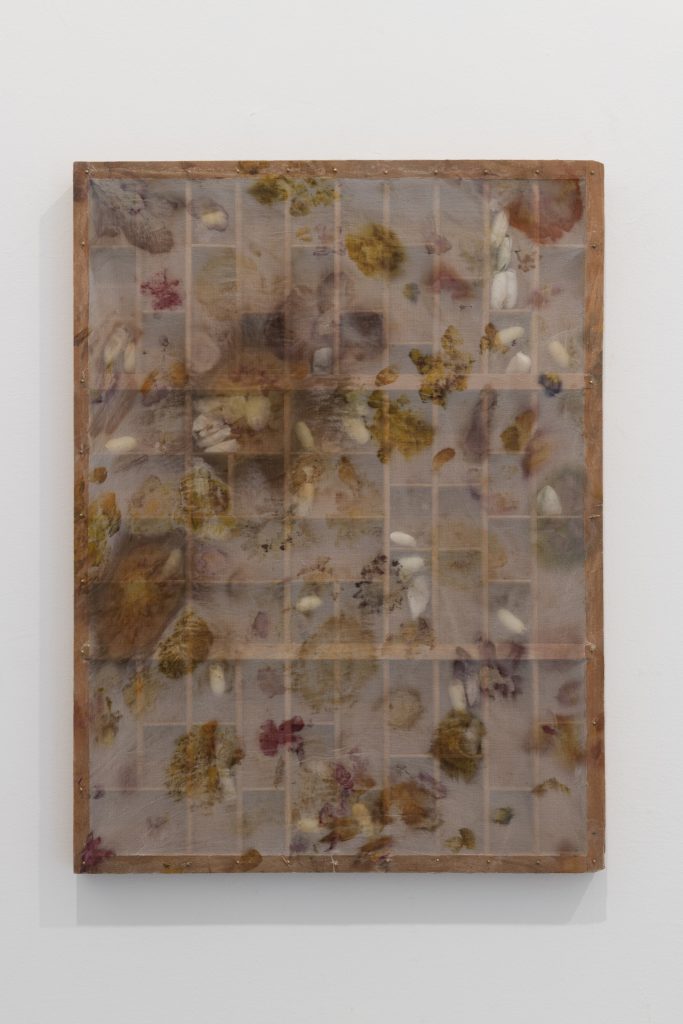
Mónica Mays Shadow Box (2023). On view at Liste with Blue Velvet Projects. Courtesy of Mónica Mays and Blue Velvet Projects.
New (Again) VIPs and New Experiments
Less rampant speculation has also been coupled with a discernible down-shift when it comes to a hyper-focus on one trending thread of art—such as we saw with figuration in recent years, which may have reached its peak in 2022.
On the recent rush on figurative painting (which, to be fair, is still present), Patrick said that there has been “nothing to replace it in terms of a new fervor.”
That can allow for room for experimentation. Patrick, whose gallery program is known for this particular quality, will present the work of Canadian artist Sharona Franklin, whose delicate and unusual sculptures explore themes of radical therapies, cybernetic craft, and bio-ritualism. Her works, which range from between $5,000 and $30,000, have generated a lot of collector and curator interest in recent years, but her delicate and nuanced materials deserve to be seen in-person.
One collector who is headed to Patrick’s booth is Turin-based Patrizia Sandretto Re Rebaudengo, who also name-checked Franklin’s presentation as one of her stops. Re Rebaudengo, who never misses an edition of Art Basel, will be at Liste on Monday morning as usual, before heading to the Unlimited sector. At Liste, Sandretto Re Rebaudengo is excited to see Mónica Mays’ presentation at Blue Velvet Projects. “For me, it’s always interesting to pay attention to the young galleries,” she said.
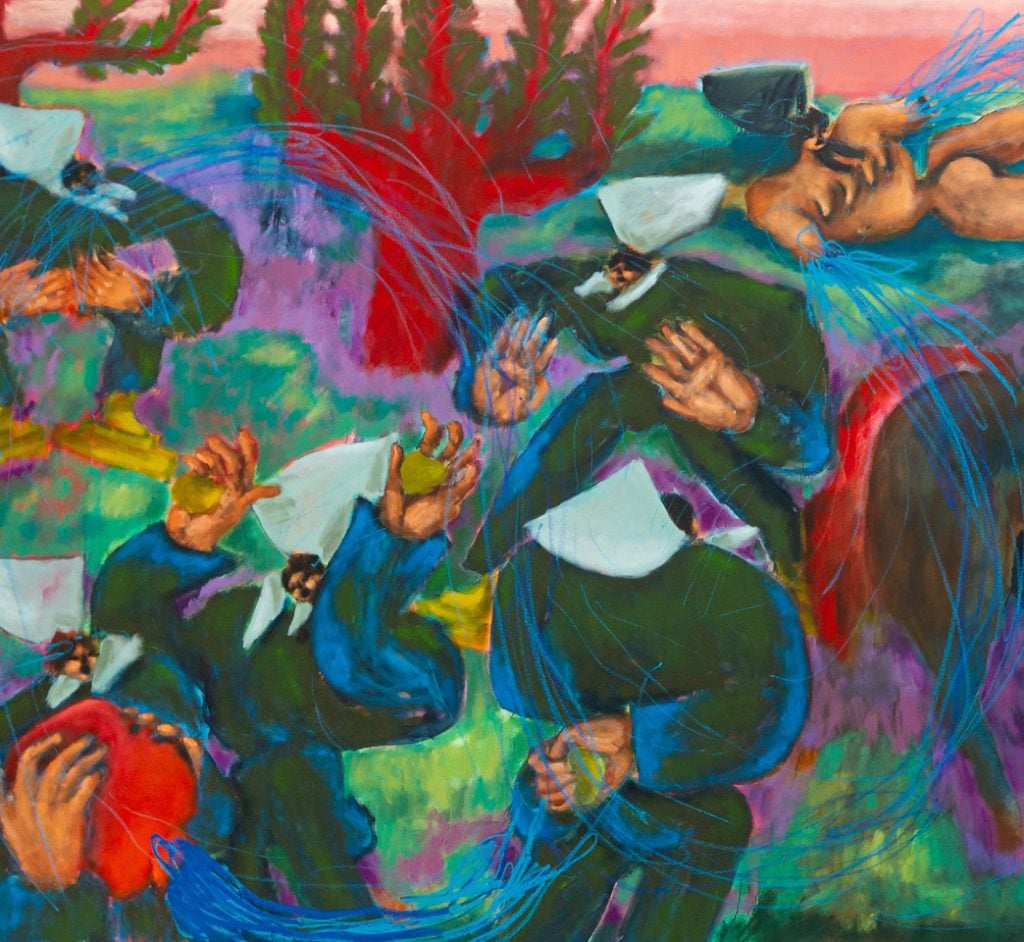
Detail view of Conny Maier’s The Source, (2023) which will be presented at Art Basel Unlimited. Courtesy the artist and Société, Berlin.
For curators, the diversity of works at the fair is why they come to Art Basel. Udo Kittelmann, former director of the Berlin State Museums is presently director of the Museum Frieder Burda in Baden-Baden. He goes to Basel to be surprised. And the lack of a major market trend hoovering up the attention allows for more experimental positions in the booths, he said.
“These times remind me of the early 1990s. All of a sudden, there [was] a time where everything is possible. This feeling is coming back,” Kittelman said. “We live in an unsafe world and we do not have a sense of what will happen next month. It’s a time of trial and error. I see a younger generation very much open for new experiments in all kinds of media.”
The curator is particularly looking forward to seeing a massive, seven-meter wide painting by German artist Conny Maier at Unlimited, presented by Société and Ruttkowski;68, which will be offered for a price of between €200,000 and €300,000. Beyond the fair, Kittelman highlighted the first museum show of the acclaimed artist Doris Salcedo at Fondation Beyeler. The Colombian artist’s powerful work Tabula Rasa XI (2019–23), consisting of destroyed and delicated rebuilt tables, will be on view at White Cube’s booth (and on sale for USD 1,125,000).
After her rounds at Liste and Art Basel, Re Rebaudengo plans to visit the second edition of Basel Social Club, which launched poolside at a 1930s villa last year. The informal exhibition hopes to create a social place for people to hang out around the fair (we can’t all sit at Trois Rois). Godsill also said Basel Social Club was on his itinerary. The non-fair selling event has earned its place on the VIP satellite program on the Art Basel website, but the buttoned-down, community appeal is its real draw.
“It is a new model that is not an art fair,” said Robbie Fitzpatrick, one of the co-founders of Basel Social Club (he is also a founder of the Paris-based Fitzpatrick Gallery and was also behind the crowd-favorite Paramount Ranch in Los Angeles which took place a few years ago). “We want to emphasize the artist before the exhibitors and show the breadth of our artistic community,” he said. “We are not asking exhibitors to stand there with iPads in front of their artworks.”
This year, they will present a scaled-up version at a former mayonnaise factory, with a full program of music and artistic performances. The event also notably has some blue-chip attendees this year, including Hauser & Wirth, which will present a work by Pipilotti Rist. There are also nonprofit project spaces intermingled with those names, a gin bar, a cinema, a restaurant, and a concert of Mykki Blanco to look forward to.
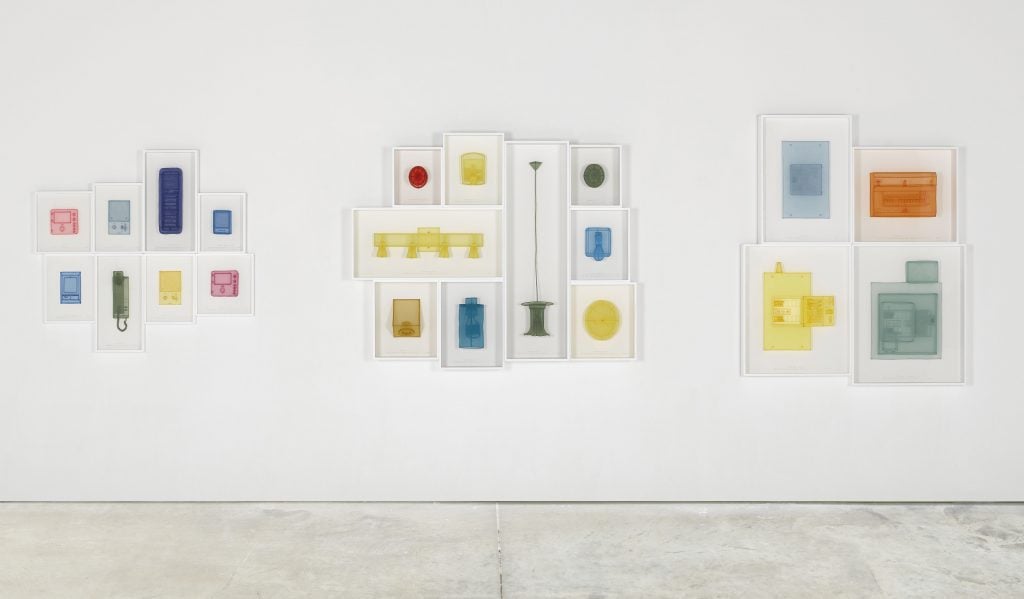
Do Ho Suh Intercoms, London Home & Studio, New York Home, Studio & Corridor, Berlin Home, and Providence Home; Lighting Fixtures, New York Studio & Corridors, Seoul Home, Berlin Home, Providence Home; Fuse Boxes, London Studio, New York Home, Studio & Corridor, (2019). © Do Ho Suh. Courtesy the artist and Lehmann Maupin, New York, Hong Kong, Seoul, and London.
The project also responds to the accelerated pace of the art market in recent years, which has been especially draining for those in the middle or emerging markets.
Back at the main fair, David Maupin is looking forward to a fair where “the whole world comes together for the first time in many years,” noting that even at the last edition, most of his Chinese clients were absent. Their return comes at the right time as it is the gallery’s 20th anniversary at the fair. A focal point of their booth will be a major piece by Do Ho Suh.
Like many in the industry, Maupin notices that air of uncertainty, but he doesn’t see the impacts as completely negative. “There is more caution in the economic world…and the recent auctions are not quite what they were before,” he said. “So it’s an opportunity for serious collecting. Art Basel has always been a place for this.”
More Trending Stories:
Researchers Find a Megalodon Tooth Necklace in the Titanic Wreckage—But the Rare Object Will Probably Have to Stay at the Bottom of the Sea
Archaeologists in Peru Used A.I. to Discover Ancient Geoglyphs of Killer Whales, Two-Headed Snakes, and Other Creatures Carved Into Land
Is Time Travel Real? Here Are 6 Tantalizing Pieces of Evidence From Art History
Nicolas Party Honors Rosalba Carriera, the Rococo Queen of Pastels, in a New Installation at the Frick
Is TikTok Trying to Cancel Salvador Dalí? Why Art Historians on the Platform Are Denouncing the ‘Problematic’ Surrealist Icon
L.A. Art Phenom Adam Alessi Has Blazed a Trail to New York. His Warped Figures Are Avatars of an Unsettled Art World
